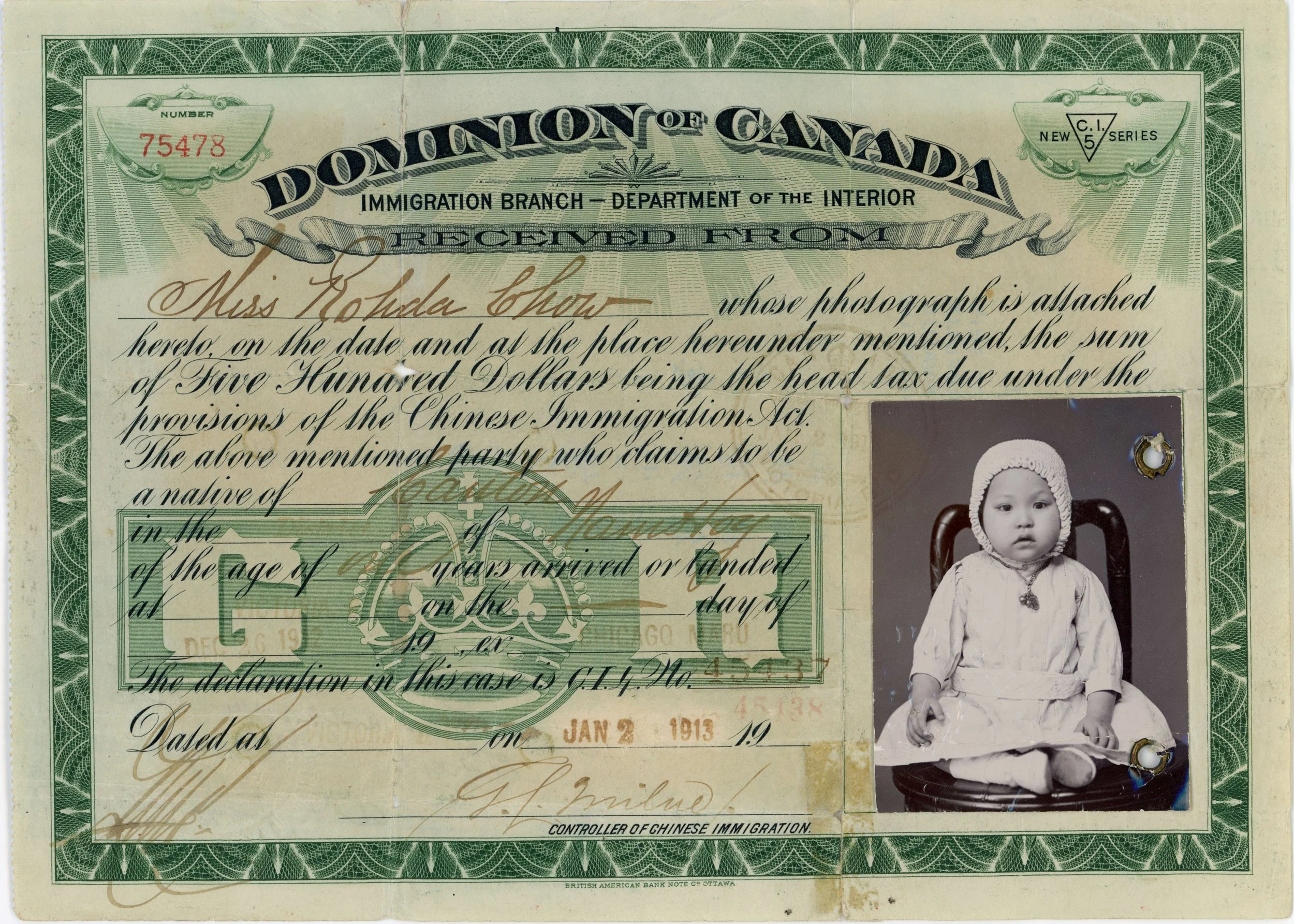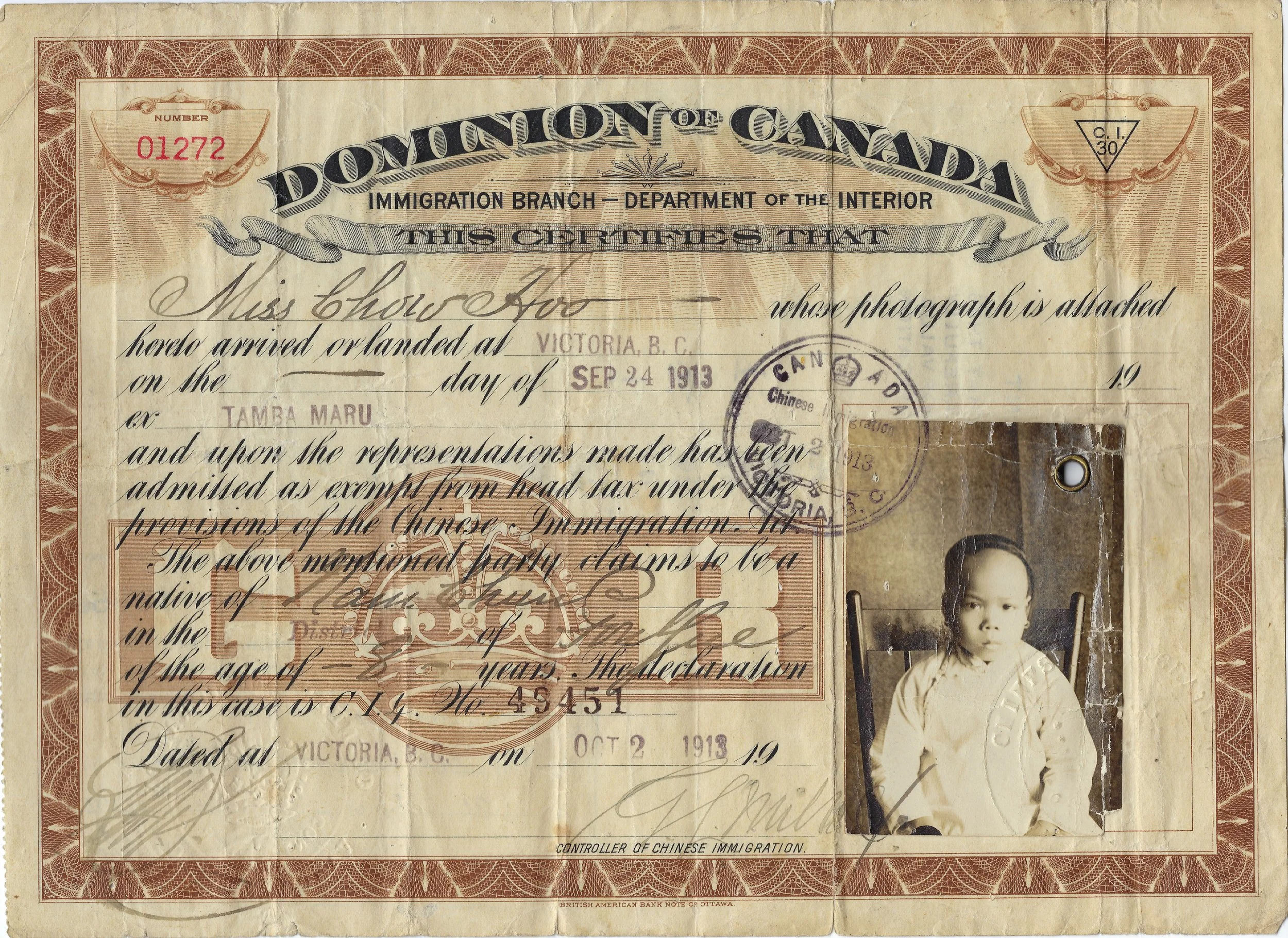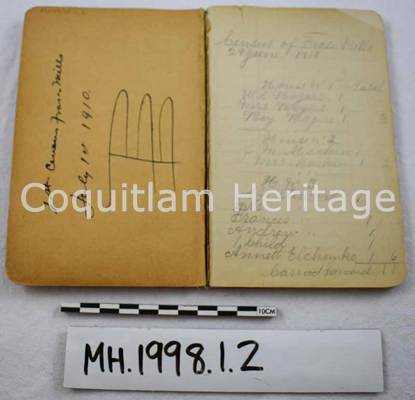Documents
-
![]()
C.I.5 Revised
This is a C.I.5; this document was issued to individuals as proof of head tax payment. This version of the C.I. 5 was issued starting in 1912, when the head tax rose to $500, up until the restriction of all Chinese immigration in 1923. It also served as an identification document. The picture was normally taken in China and brought with the immigrant.
-
![]()
C.I.30
This is a C.I.30, this document was issued to those except from the head tax; these were merchants, diplomats, students, clergy, and academics. C.I.30s were also issued to the families of these people when they entered Canada.
-
![]()
C.I.45
This a C.I.45, this document was issued beginning in 1923. As part of the 1923 Chinese Immigration Act, all Chinese people in Canada had to register. Those with an earlier document could have their re-certified, but for Chinese people born in Canada, a new C.I.45 was issued as proof of their registration.
-
![]()
Fraser Mills Census
The Canadian Western Lumber Company, known locally as the Fraser Mills, was one of the world’s largest lumber mills during the early 1900s. Initially, the company employed a majority Asian workforce, following the 1907 Race Riots in Vancouver, the company began to replace their Asian workers with Francophone men from Eastern Canada. This 1910 Census shows the decline in numbers of Asian workers. The Census also shows the recording of the names of white workers; Asian workers did not have their names recorded in the census, only the number of them.
Daily Life
-
![]()
Teacup and Saucer
The history of tea and tea culture is very old and extensive in China. Tea, also called “cha (茶)”, is believed to have originated over 5,000 years ago. During the era of the Tang dynasty (618-907), dried tea cakes were roasted and ground before being brewed in hot water, occasionally alongside other herbs and fruits. By the Ming dynasty (1368-1644), tea began being processed in a dried and loose-leaf format before being steeped in boiling water inside a teapot.
-
![]()
Instruments
These are traditional Chinese instruments, they are commonly used in festivals, folk harvest events, traditional performances, and Lunar New Year celebrations. The traditional Chinese rattle drum, when spun, the beads swing and hit the drum, making a rattle-like noise.
-
![]()
Instruments
The cymbal’s pitch and sound run relative to its size, this pair of cymbals is small and easily held in each hand via the red ribbon.
-
![]()
Instruments
The traditional Chinese waist drum, also called “腰鼓 yāo gǔ”. The drum is attached to the waist via strap and is struck with either drumsticks or one’s hands, allowing greater maneuverability as the drummer dances during the performance.
-
![]()
Biscuit Tins
Macfarlane Lang & Co. originally began as a bread bakery in 1817. In 1885, they began to manufacture biscuits. The top of the tin’s lid shows a woman with two Pekingese dogs. The Pekingese is a type of toy dog, originating in China, and its namesake refers to the capital city of Beijing (often Romanized as Peking). Pekingese dogs often served as companion dogs.
-
![]()
Biscuit Tins
Peek Frean is a biscuit and confectionary manufacturing brand, owned by United Biscuits (UK). These biscuit tins depict Chinese figures and images without any association with Chinese manufacturers. Despite the racism towards Chinese people, Chinese imagery remained, and continues to be, a popular feature of advertising.
-
![]()
Abacus
The abacus is a calculation tool, often used for addition/ mathematics. Its frame-like structure allows the user to slide beads back and forth for calculations. The exact historical origins of the abacus are unknown, but it is believed to have early connections to regions within Eastern Europe and Asia. Before numerical notations were widely used and standardized, tools like the abacus were used for practical calculation. The earliest Chinese abacus dates to around 200 BCE, during the early Han Dynasty. The early Chinese versions were known as a Suanpan and differed slightly in the number of beads used. This may have been due to an origin in counting rods, an earlier form of accounting system.
-
![]()
Mah Jong
Mah Jong is a game of Chinese origin dating back to the mid to late 1800s. Due to its historical presence as a popular gambling game, the game’s reputation suffered controversy by association and was banned in 1949 by the People’s Republic of China. Played with four players, the goal of the game is to obtain a complete hand, being four sets and a pair of like tiles (for a total of 14), by discarding and collecting tiles. In the 1920s, the game was introduced to the United States.
-
![]()
Blue Willow Platter
This serving platter would have been part of a larger table ware set. The pattern was inspired by a traditional folktale about a pair of lovers. Produced in post-war Japan for export markets, this style of porcelain was designed by Western designers for Western tastes. Ironically Chinese people faced racism in Canada while tableware imitated Asian styles.













